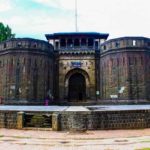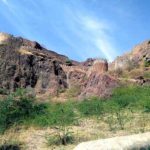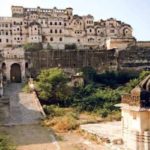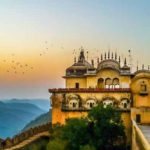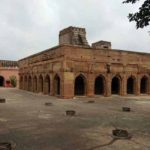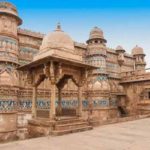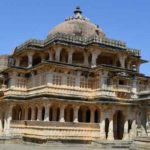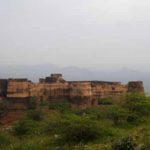Pratapgad Fort is a mountain fort built by Chatrapati Shivaji Maharaj. The fort is at a distance of 24 km from the hill station of Mahabaleshwar. The fort holds a sturdy view of coastal Konkan. The Bhavani Temple and Afzal Khan’s tomb are other places of interest.
Pratapgad consists of two forts – an upper fort built on the top of the hill and a lower fort immediately below on the south and the east. Surrounding areas can be easily taken guard from the fort on almost all the sides. The southern side is rocky while the eastern side has a strong outwork ending in the Afzal Buruj.
The famous minister More Tirmal Pingale on the command of Shivaji Maharaj to control the rebellious satraps of the surrounding Javali Basin built Pratapgad Fort in 1656. It is believed that Chatrapati Shivaji Maharaja was blessed with a shining sword at the temple of Goddess Bhavani here Rajasthan Monuments.
The historic battle between Chatrapati Shivaji and Afzal Khan, the commander of the Bijapur Sultanate fought here. Bhavani Temple and Afzal Khan’s Tomb are major attractions where are situated near the fort.
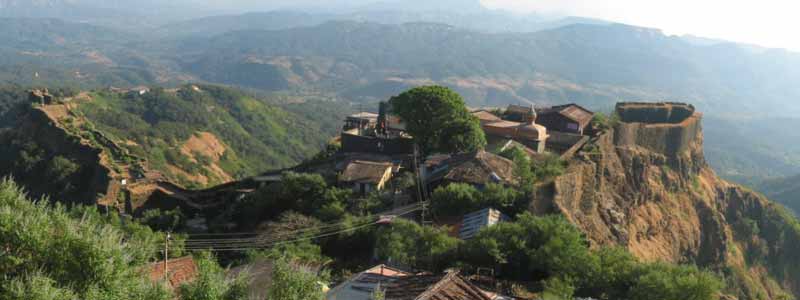
History of Pratapgad fort
The construction of Pratapgad was done in two stages. In the first phase, Construction of the western part of the fort behind old doorway was completed. The construction of the present main doorway, afajalmachi, and Flag bastion were done later.
Pratapgad Fort is situated near the Ambenali pass on the road from Mahabaleshwar to Poladpur in Satara District of Maharashtra state, India. It is the first fort on the north end of Sahyadri mountains ranges. Pratapgad fort is about 3543 feet above sea level. Sahyadri in Pratapgad region is in the form of layers of igneous rocks. The main type of rock is Basalt. This is known as the Deccan trap Rajasthan Budget Tours.
Pratapgad fort is not really a trekking destination and very few trekkers opt to trek up Pratapgad fort. Pratapgad consists of two forts – an upper fort built on the top of the hill and a lower fort immediately below on the south and the east. Surrounding areas can be easily taken the guard from the fort on almost all the sides. The southern side is rocky while the eastern side has a strong outwork ending in the Afzal Buruj.
Pratapgad is surrounded by Sahyadri hills from three sides and on the forth side of Kokan, there are straight vertical ridges. This hill is surrounded by thick forest on all sides. Even today such a thick forest is present in some part. Due to such forest Javali was called as tigers den. This natural protection was used skillfully by Shivaray to defeat mighty forces of Afjalkhana even without firing a single cannon from the fort. Pratapgad is a true forest fort as described in the ancient literature and hill fort also.
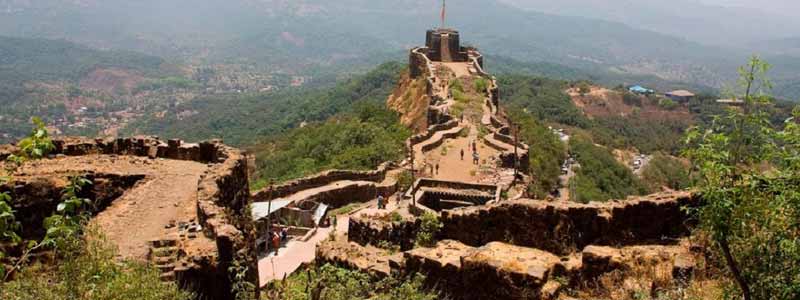
Pratapgad Fort Architecture
The Fort has been divided into two different parts, which is known as Upper and Lower Fort. The upper fort is built upon the summit of the hill, it is built in a rough square schedule with 180m in length, and the length of each side is equal. The upper fort assists with the ancient and permanent temple of Lord Mahadev or popularly known with his name Shivaji. The temple is found the northwest of the fort, and it is surrounded by Sheer cliff which is 250m drop of.
On the other hand the Lower part of the fort is 320m in the length and the width of 110m. This is found on the southeast part of the fort. The lower part of the fort is with the security or defence of towers and bastions which are approximately 10-12 meters in the total hight.
The Afzal Tower is extended elsewhere from that of the actual fort and it protects the approaching way to the fort. It is well thought out to be constructed after the war or battle of the Pratapgad, and to believe the head of Afzal Khan has been buried under the same ground of the tower.
Furthermore is has also come to believe the during that era, of 1661, Shivaji Raje was not able to visit goddess Bhavani temple which was located in Taljapur, therefore he thought of building the construction of the temple in the name of the Goddess, and dedicated the temple which can be positioned in the fort. Hence temple is to be found at the eastern side of the fort, the lower one. The temple’s hall construction was rebuilt. The hall is structures with the pillars which are of the wood, and the pillars are about 50m in length and the broad is 30, although the height is 12m.
The pilgrimage is built out of the stone, and the pilgrimage is given the portrait of the Goddess, which is found with the black clothe image, finished with the stone work. The top roof is however flat, although which has been covered with the small spire or even called Shikhar, which was located by Satara Raja Pratapsinha.
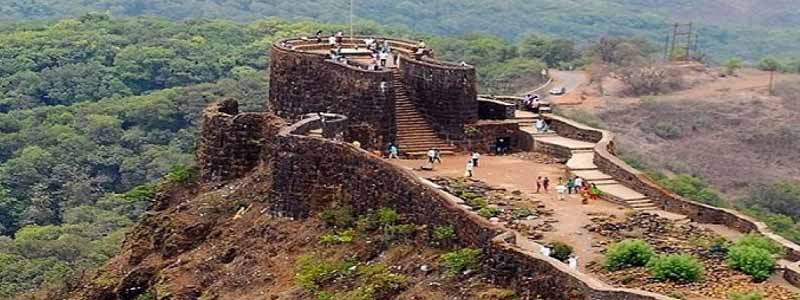
Best time to Visit
The best time to visit this fort is during winter seasons. One can also visit this heritage site during holidays. It comes under Maharashtra tour department and is promoted by Maharashtra tourism.
How to reach Pratapgad Fort
There are two routes to reach Pratapgad fort. One is via Mahad-Poladpur and other one via Wai-Mahabaleshwar. A small hamlet namely Kumbhareshi or Vad can be reached from either side. On South-east side there is a village called Par. The way passing between these two places takes one to Pratapgad fort.
Rail: The nearest railhead is the Pune railway station. Local trains are available from Mumbai and Kalyan railway stations to this place. Besides, Pune is well connected with the major cities of India through a robust rail network.
Road: State transport buses are available from Mumbai to the base of the fort via Poladpur. There is a village near Poladpur by the name of Wada Kumbroshi. A tarmac road originates from the village which terminates just before the famous watchtower at the fort. Besides, Pratapgad Darshan buses are available from Mahabaleshwar.

